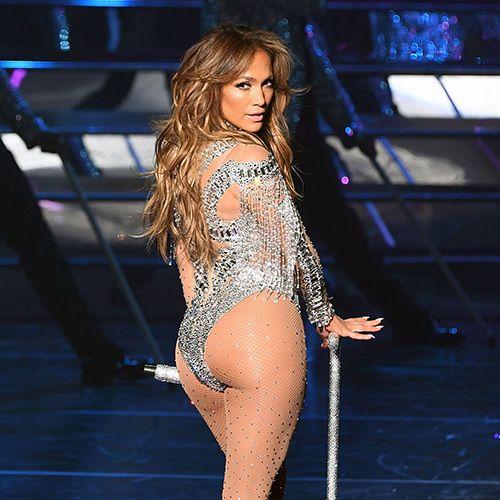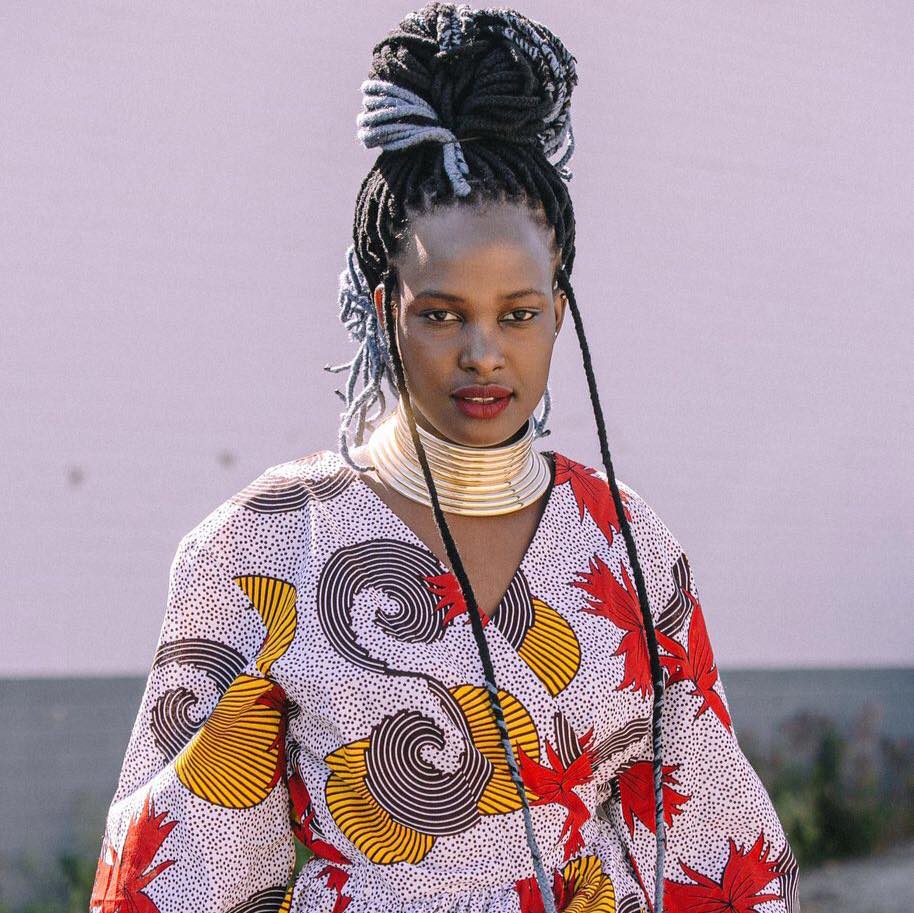Nikita Jain reveals how India Faces Growing Outrage as Gender-Based Violence Escalates and Justice Is Consistently Denied to Women, Especially Those from Oppressed Communities.
✍🏾 Nikita Jain
As a journalist from a developing country, first narratives are not encouraged, but I wanted to make this a personal article.
After covering journalism in India for about eight years, I question whether the work we journalists do actually brings change. I have been struggling with this question for months, especially since we are witnessing genocides in Gaza, Congo, Sudan and other parts of the world.
There is no time to process as we jump from one story to another. For me, it has been the same. But things shifted while I was writing this story, and I thought of making it a personal one. This was also because of my conversation with Nida.
When I video-called Nida, the sun was shining on her face, and she looked radiant. Her hair was open, and she had potato salad in front of her. “I will speak to you while I eat my lunch,” she laughed.
For 26-year-old Nida Kamal, sitting at her desk as the sun soothed her skin is the most calming time of the day.
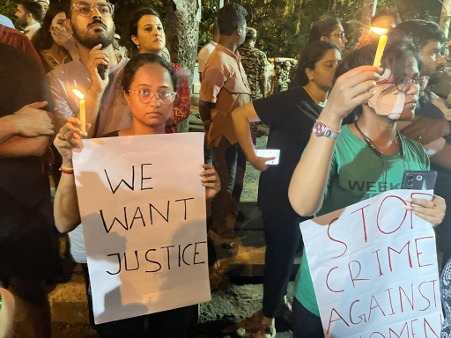
Kamal, an Indian Muslim migrant student living in France, moved there a few months ago. She had just finished her master’s from the United States and flown back to her home country, India.
Originally from India’s Mumbai city located in Maharashtra state, which is the country’s western peninsular region, Kamal had no longer thought of shifting.
“Who wants to leave home and their parents behind?” she said.
“People kept asking me why I left India. They kind of pestered me, actually,” she said. After pausing, she added, “Let me just give you the real answer.”
But the real answer is so well known that I was not surprised to hear it. Nida, who comes from a religious minority in India, which is also facing a genocide-like situation by the right-wing Hindutva forces, felt unsafe and unsure.
While her community is being persecuted for their religious identity, there is a massive gender-based violence that women in different parts of the country, irrespective of their identity, go through and have been going through for decades, with the situation only getting worse.
“As someone who has been through rape in the family, my reason to have left home has always been to avoid the violence, avoid the inequities that I have constantly faced due to religion, due to gender and due to this understanding of what it is,” she said.
“What is home if there is violence surrounding you at every step? Is it really home even if the walls perpetuate the same thing?” she asked.
Violence against women is not new in India. For years women have been facing rape, sexual harassment, eve teasing, domestic violence and other kinds of violations. However, while all cases are brutal and gory, only some make it to the headlines.
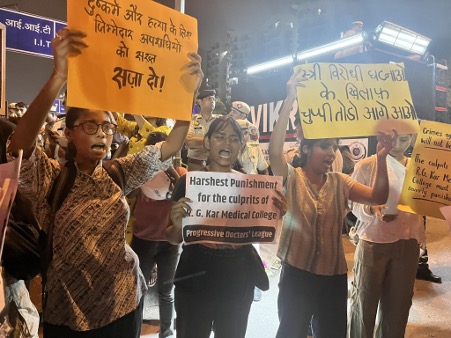
Just a few days back, there was a massive outrage over the brutal rape and murder of a 31-year-old doctor in India’s West Bengal. The case shook the nation, which led to massive protests, with women all over the country coming out on the streets demanding harsh punishment for the perpetrators. A demand which has been a part of discussion for years.
The world was shaken by the gruesome details of the case, especially since the rapist was not arrested and the college where the incident happened allegedly tried to tamper with the evidence. The woman belonged to the “Other backward Category” or “OBC” – a term used by the Government of India to classify communities that are “educationally or socially backward”.
She was an only child to her parents and single-handedly became the first woman in her family to become a doctor. Her parents are devastated, and the case becomes political. Questions over doctors’ safety also become a major concern, with medical professionals still continuing with the protest.
However, this is not an isolated incident.
According to the recent data from India’s National Crime Records Bureau (NCRB) – an Indian government agency responsible for collecting and analysing crime data – an average of nearly 90 rapes a day were reported in India in 2022.
However, the figures are likely to be higher, as many such crimes go unreported due to fear of victim shaming, retaliation, and a lack of faith in police investigations.
“The Kolkata rape case was big, but was it the only one that happened that week? No. Was that the only one that happened the week before? No,” Nida said, referring to how reading about brutal rape cases has become a norm. “I was more surprised when I saw how this case got so much attention, and I wondered why,” she added.
The same week when the 31-year-old doctor was raped and murdered, a 14-year-old Dalit (a systematically India’s centuries-old discriminatory caste hierarchy) girl from Bihar (Eastern part of India) was also raped and murdered.
According to reports, the 14-year-old girl was kidnapped from her house on the night of August 11, and her body was recovered the next morning.
While the Kolkata case got a lot of attention, so many cases, especially against systematically oppressed communities and minorities, are not even covered by the mainstream Indian media.
Rights groups say that women from Dalit and tribal communities are particularly vulnerable to sexual violence and other attacks.
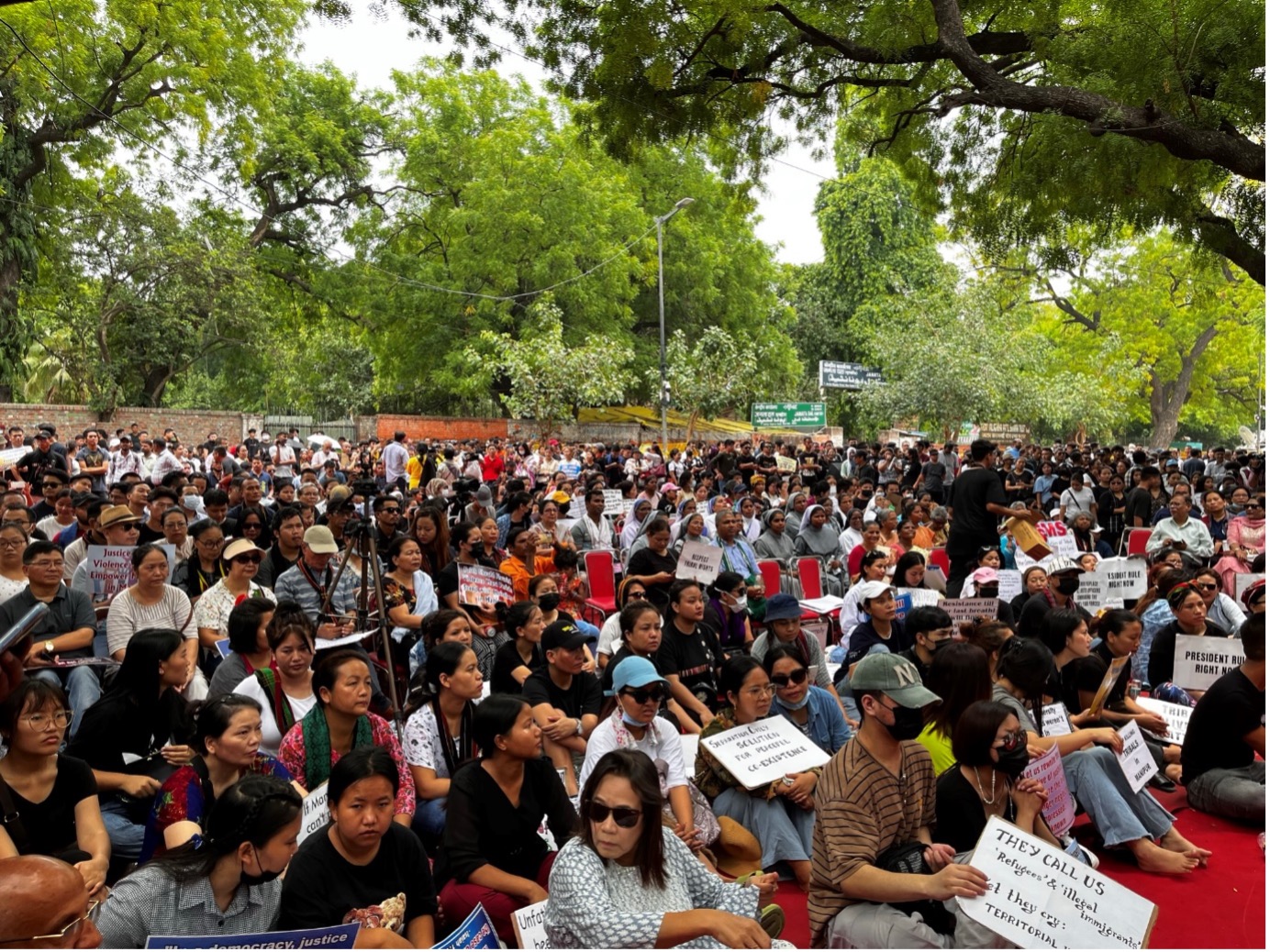
Muslim women, on the other hand, are subjected to online as well as offline sexual violence, especially at the hands of the right-wing Hindutva brigade.
With the current ruling Bharatiya Janata Party (BJP) government, the situation of women in both urban and rural India has deteriorated.
Meanwhile, the activists in India who have been working on gender-based violence have shared their concerns over the situation, demanding better protocols and laws.
Jagmati Sangwan, General Secretary of All India Democratic Women’s Association (AIDWA), an Indian woman-based organisation working on equality and women’s emancipation, said there is no concrete method to tackle gender-based violence in the country.
“Violence towards women is increasing daily. The official data shows that the procedures, which should be implemented for the safety and security of women in metro cities, are not being followed,” she said.
India’s rape laws are outlined in the Indian Penal Code 1860 – the official criminal code in the Republic of India –from Section 375 to Section 376E.
The definition of rape under the section is “sexual intercourse with a woman against her will, without her consent, or when she is under 18 years of age”.
The punishment for the offence can include imprisonment for a minimum of 10 years to life or imprisonment for the rest of the perpetrator’s life if the survivor is under 16 years old. If the rape results in the death of the survivor or leaves her in a persistent vegetative state, the punishment can include imprisonment for 20 years to life or death.
However, for victims, it takes years to get justice and, at times, even their lives. Sangwan told me during a conversation that there needs to be proper structures for the proper implementation of these laws.
“There seems to be no willpower on the part of the authorities to implement these,” she said.

As the outrage over the rape case of the Kolkata doctor took over, questions over India’s women’s safety were covered by international media. But back home, rage and helplessness have taken over.
As protests after the rape cases took momentum, I covered one such protest in my city – Delhi – late one night. Delhi, which is the capital of India, is categorised as one of the most unsafe cities in the whole country, and this is what the government data reflects.
I saw women with both fear and anger trying to reclaim the streets that night. “We go out to protest at midnight”, read the posters. Lighting a candle for the victim, the girls shouted slogans – “we need safety” and “Shame on the government”.
While many women came out of their homes to protest, others were not allowed to step out. It was ironic because every time a case became big, girls were told to come back home early or avoid going out at night.
I got a call from a friend, Megha Sharma (name changed on request), who wanted to participate in the protest. “Where are you?” she said quietly.
“Covering the protest. Where are you? I cannot see you,” I asked as she had messaged me she would join the protest.
She sighed and said her parents did not allow her to come out. “They said either go with someone or don’t go,” she added. Despite her telling them that friends were waiting for her, she was not allowed to come out later.
The reality of living in an environment where women, no matter what their age, ethnicity, caste or religion is, and no matter what they are wearing, cannot walk out is a harsh truth girls realise very early on.
It did not matter whether you were a doctor, a journalist, a 14-year-old or a 2-year-old baby. It is very well understood that gender-based violence is a global concern, especially for women who have migrated to a different region.
According to a report by World Population Review, globally, about 35% of women have faced sexual harassment, but fewer than 40% seek help, and less than 10% reach out to law enforcement.
Safety concerns and media coverage
In India, with caste, religion and gender being entwined, questions over gender-based violence and how it is covered is something that made me question a lot of what I did.
As I covered the protests against rape and was pondering over these questions, is when I met another woman named Geeta Chakrobarthy.
Geeta had come out with her daughter to protest against the rape case. While holding a placard, she said that even her daughter was a doctor, and the case had stirred her anxiety.
“I will keep calling her earlier whenever she has a night shift, but now I am going to get even more agitated,” she said.
For Nida, sitting far away, hearing about the rape case was a reality that she had to come across every day. She is more vulnerable to sexual harassment or violence due to her religious identity. “Even here, in a different country, I sometimes change my name when I meet a Hindu,” she said.
It also raises questions about India’s dark past and the present. In 2022, the Gujarat government granted remission to 11 men who were accused of rape of a Muslim woman named Bilkis Bano in 2002 during the anti-Muslim riots that had gripped the state.
India’s current prime minister, Narendra Modi, was the chief minister of the state during the time, and there are allegations and reports that reveal he was complicit in the violence and asked the authorities to ‘not take’ any actions against the Hindu community.
Not only was Bano brutally gang-raped while she was pregnant, but seven of her family members were murdered in front of her. This also included her three-year-old daughter, whose head was smashed on the rocks by the Hindu mob, many of whom were her neighbours.
Nida questioned why the media does not cover gender-based violence with dignity and only gives particular cases the limelight. She also wondered why it only becomes news when the victim belongs to a certain community, religion or class or if the gory crime details are revealed. The details of the Kolkata rape case were disturbing, with the media sharing forensic reports without consulting a medical professional, leading to misinformation.
However, the idea that gory details need to be revealed for people to care about rape and sexual violence shows how dubious our world is.
Things are not perfect globally, with islamophobia, gender based violence and racism on the rise in Europe and other Western countries, women would still leave home to migrate to a different country, seeking a better refuge and life.
“When I see these things here, I am constantly reminded of what life is there and how life is here. Because now, I am sitting in this little apartment of my own. The sun is shining, and I get to actually step out and not have to worry about what I am wearing or how I am looking,” she added.
I have covered a lot of violence against women in India and every time I am baffled by how brutal the cases are. With that, there are issues of intersectionality and how the media covers them. I kept wondering whether a firm law or a better society could be created with these outrages we are witnessing globally.
But as I walked back home after work, engrossed over these thoughts one late night, I kept looking back to see if someone was following me. I realised that my identity as a journalist would not save me from being a woman.
Nikita Jain is an Indian journalist, based in New Delhi with over eight years experience in the industry. She covers various issues including gender, human rights, conflict, politics, development, environment, health among others from the region.
Her work has been published in various international and national news organisations like The Wire, Article-14, Women’s Media Centre, The Polis Project among others. She has been awarded the UNFPA Laadli Media Jury Appreciation Award 22 and 23, for gender sensitive reporting. She was also an Asia Pacific Forum on Women, Law and Development (APWLD) fellow (2023-2024) where she reported stories on gender, peace and conflict, militarization and AI.

